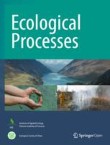Vegetation and ecosystem carbon recovery following shifting cultivation in Mizoram-Manipur-Kachin rainforest eco-region, Southern Asia
Shifting cultivation (locally known as “jhum”) is a major driver of deforestation and loss of ecosystem services in rainforests. For developing any effective conservation of biodiversity and carbon service pro...
